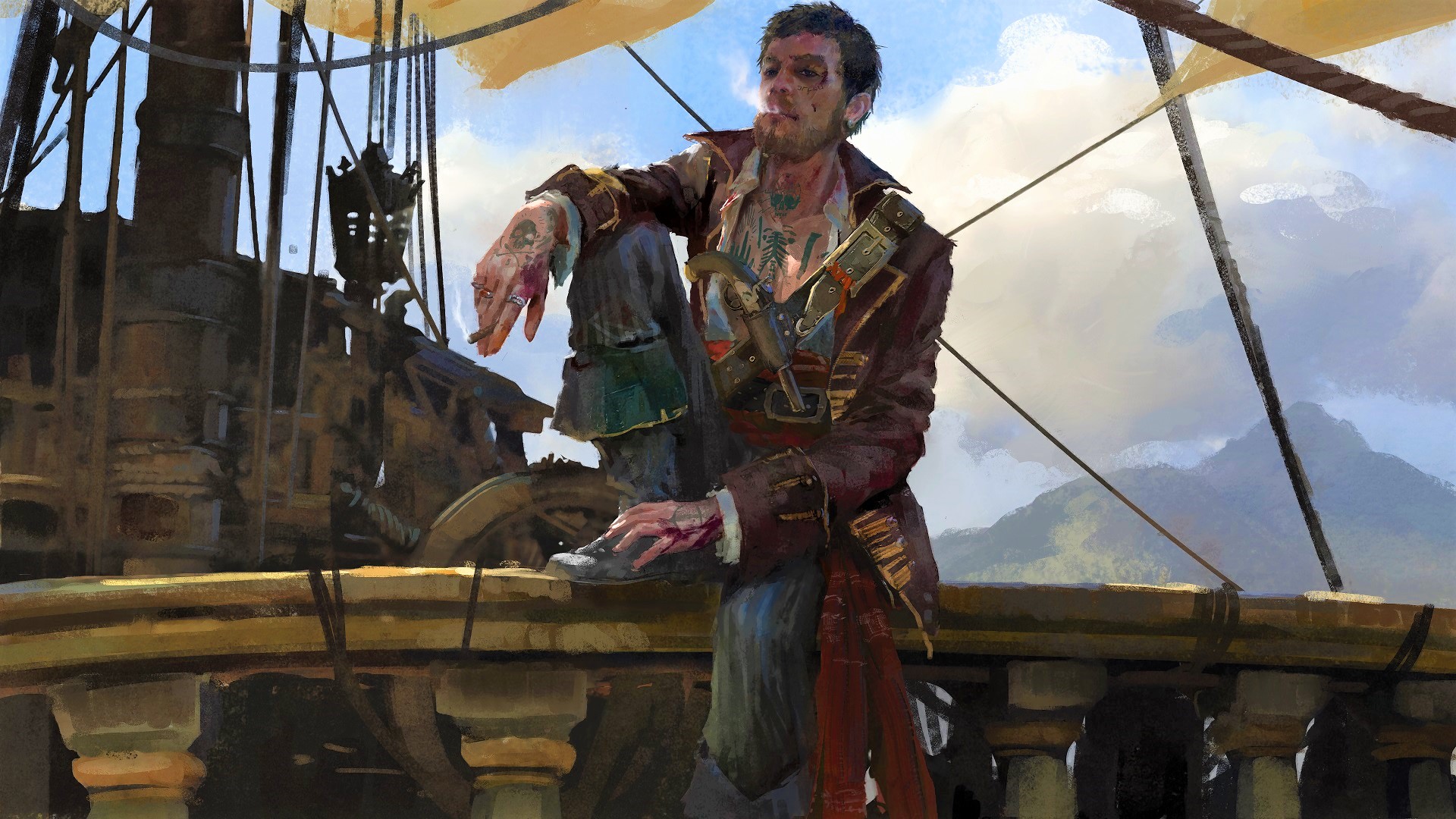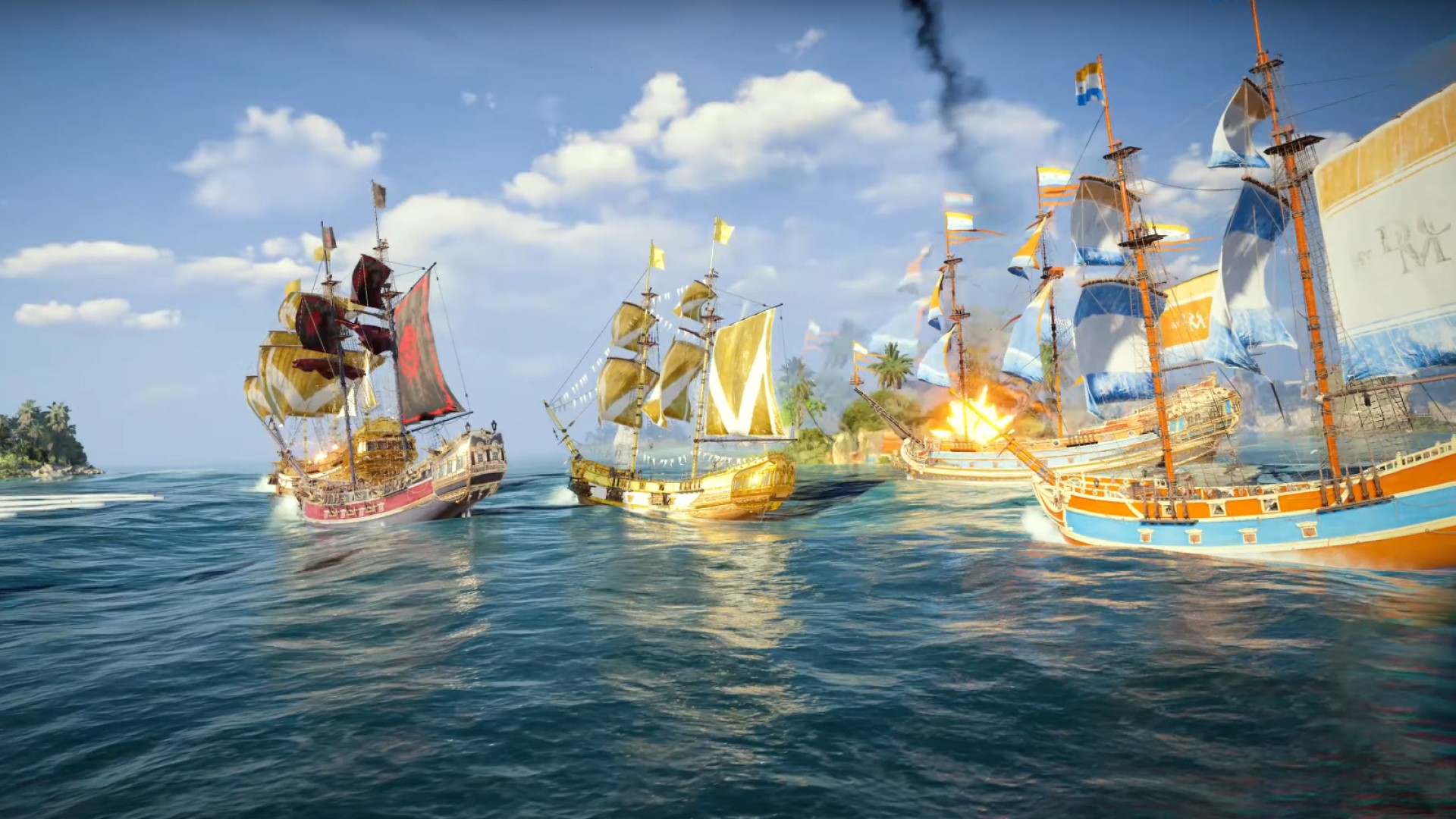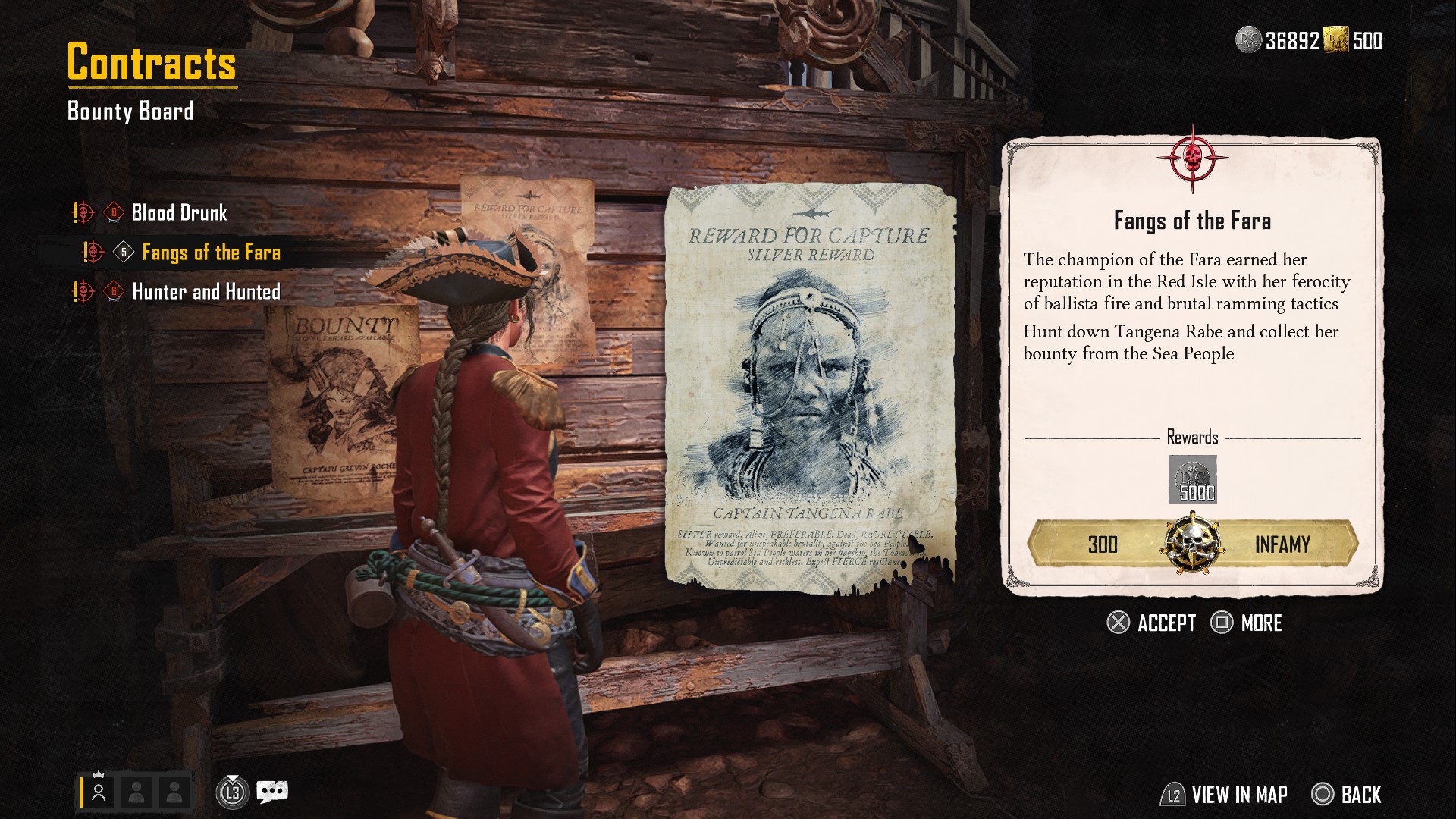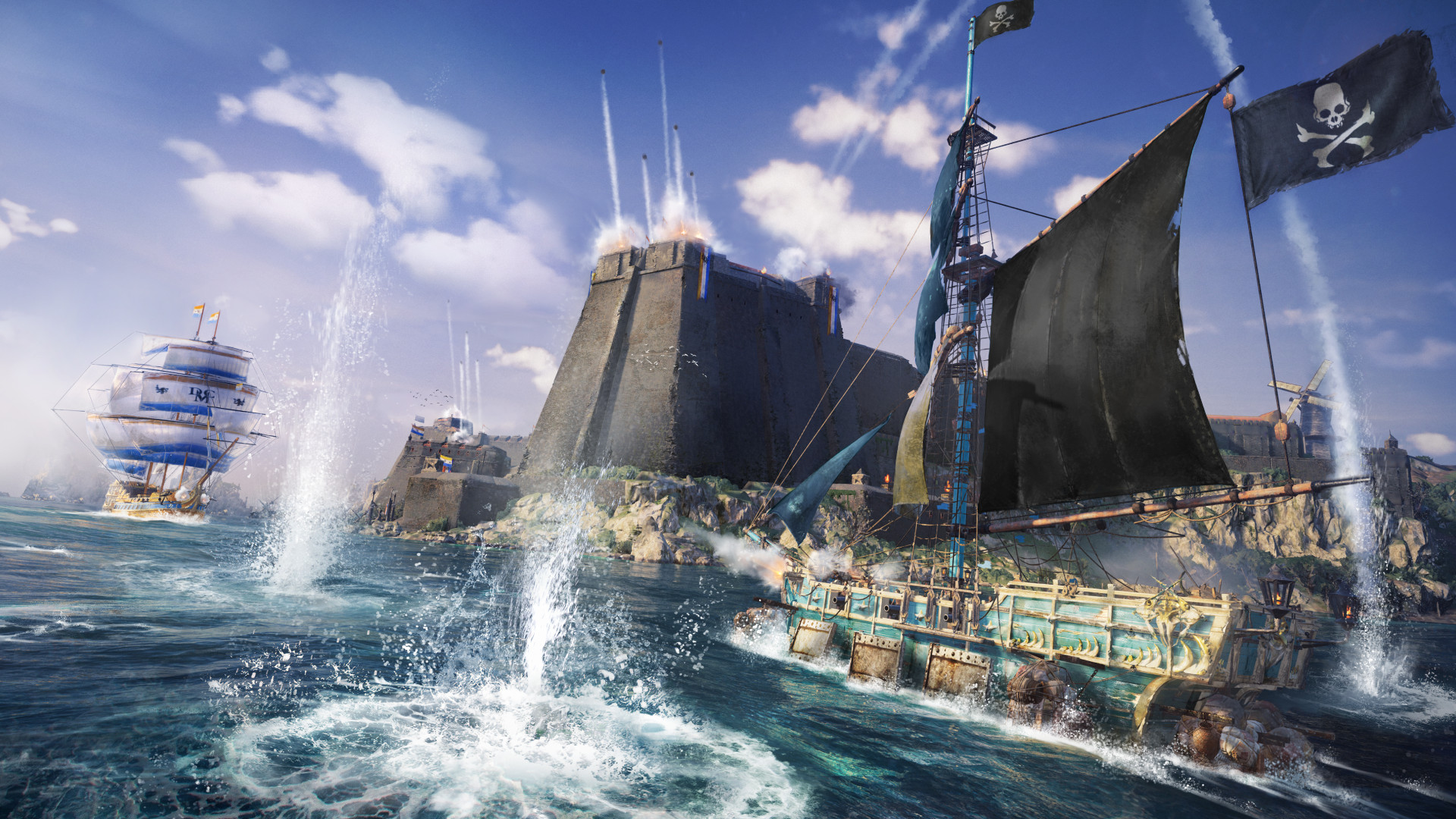
Ubisoft’s open-world pirate sim Skull and Bones talks big. From the moment you create your character, the game coerces you with the idea that you could “rule the seas" in what I can only describe as a 'press F to pay respects' moment.
Starting my own playthrough, I felt that this was a cheque that Ubisoft would never be able to cash. After all, how could a pirate game without any actual swashbuckling or swordplay deliver on such a lofty promise?
However, after a week with the multiplayer adventure game, I’ve begun to change my tune - my shanty, if you will. Though Skull and Bones feels quite skeletal in its current state, I was pleasantly surprised by its robust and well-constructed foundations. At the time of writing, the story is thin on the ground, and the activities mostly boil down to completing repeatable quests. But, the mechanics that tie these errands together are strong and could be the start of something special should further supporting content be released.
For example, sailing in Skull and Bones feels fantastic, emulating the authentic feeling of sailing but cutting enough corners to avoid tedious complications. Like real life, you’ll need to avoid sailing into the wind, forcing you to pay attention. However, the minute adjustments to sail setting are left to your crew, removing a lot of the real-world faff. This means you have to plan your course during travel and battles rather than just jumping behind the helm and setting sail.
When in motion, Skull and Bones' ships beat across the waves, with turbulent waters jostling vessels and further complicating aiming and traversal. Together, this perfectly captures the Age of Sail fantasy and marks a fundamental strength of Skull and Bones. It’s rare for travel in an open-world game to be anything but a chore, but Ubisoft’s latest has managed to nail it, all while reinforcing the pirate fantasy at its heart.
Across the waves

Interesting travel isn’t the only feather in Skull and Bones’ cap, either. The process of charting a course and then setting sailing through a section of the game’s open world also results in encounters with non-player character (NPC) ships. You can prey upon them or leave them be as you see fit - a choice that seems truly piratical.
In addition, sometimes you’ll run into ongoing battles and have to decide if it’s worth wading in for yourself. Rather than being entirely straightforward though, this decision is complicated by the game’s resource system. Does a ship carry something you want? If so, then the urge to attack becomes harder to resist.
These waters are muddied further by the fact that attacking ships that could outmatch yours and you start to ask yourself tough questions. Is it worth risking death for the chance at loot? Can we really take on that heavily armed warship? Weighing up these sorts of choices really makes you feel like a pirate captain, having to pit risk against reward as you attempt to build your fortune.
Skull and Bones has a high-stakes death system reminiscent of an extraction shooter
That said, though they have potential, the breadth of these encounters isn’t all that impressive as of yet. Currently, you can prey upon vulnerable merchant vessels, take on enemy warships, and flee battles that get too spicy for you. While all three courses of action are entertaining, they can often feel a little monotonous after a while depending on how long your swashbuckling session is. However, should Ubisoft populate this promising design space with more kinds of encounters further down the line, I can’t help but feel like the open-ended seaways of Skull and Bones will start to show a real promise.
You can find more of this promise in Skull and Bones' high-stakes death system, which is reminiscent of an extraction shooter. Perish, and you’ll lose a great deal of cargo, including your valuable trade goods. If you want them back, you’ll need to recover the wreck of your lost ship, which is infinitely more difficult if you sunk in a dangerous area, since item recovery in these locations is much easier said than done. To avoid this disappointment though, between excursions, you can dump your resources in the warehouse. They’ll be safe there, but you won’t be able to sell them for a profit on a far-flung outpost which is a sacrifice for those looking to cash in big bucks. Again, it’s all about balancing risk and reward, a feeling that helps generate a sense of genuine trepidation and excitement whenever you set sail.
Bare bones

Sailing aside, Skull and Bones is far less generous when it comes to its storyline and mission structure. Repeatable fetch quests and kill missions ensure that adventures on Ubisoft’s high seas have diminishing returns for players.
However, if you put the lackluster rewards aside, you’ll see that Skull and Bones has the potential of a nascent MMO. Players customize their ships, using diverse hulls, weapons, and furnishings to design vessels that fulfill specific combat roles. These add some spice to emergent encounters. For instance, you might build a support ship, an asset that will help you bail out strangers as you make your way across the sea. Alternatively, you could build a heavily defensive vessel and spend your time shielding allies and drawing the attention of enemy ships. These options help to make the experience feel more unique, rather than simply offering everyone the same cannon-firing bow-to-bow combat.
Skull and Bones could follow in EVE Online's footsteps
When building a ship in Skull and Bones, I was reminded of my time with the sci-fi massively multiplayer online (MMO) game EVE Online. In EVE you spend most of your time in charge of a spaceship, making your way across the galaxy in search of riches, violence, or, perhaps, just a new adventure. The scope for ship customization in EVE is immense, allowing you to furnish almost any style of spaceship you can think of. Granted Skull and Bones doesn’t offer nearly as many hulls or as much flexibility as EVE, but I couldn’t help but feel that, with a little bit of love from Ubisoft, the pirate sim could follow in the MMO’s footsteps.

The cycle of repeatable adventures fleshed out by rewarding combat mechanics also reminded me of Bungie’s multiplayer sci-fi first-person shooter (FPS) Destiny 2. Between bounties, events and regular contracts, Skull and Bones doesn’t have the same mission variety as Bungie’s FPS. However, should Ubisoft follow Bungie’s example by adding more enemy types and a wider range of encounters, it could, in theory, build something as iconic and time-tested as Bungie's juggernaut.
While Skull and Bones is undoubtedly a flawed enterprise that’s liable to disappoint those looking for an entirely fleshed-out experience, it would be short-sighted not to remark on the open-world pirate simulator’s impressive potential. As examples, EVE Online and Destiny 2 offer blueprints for how Ubisoft could develop Skull and Bones into something far greater than its current incarnation. Should Ubisoft stick to its guns and give Skull and Bones the support it needs, we could well see a renaissance for the game down the line.
Looking for other games to play in the meantime? Check out our lists of the best multiplayer PC games and the best co-op games.







